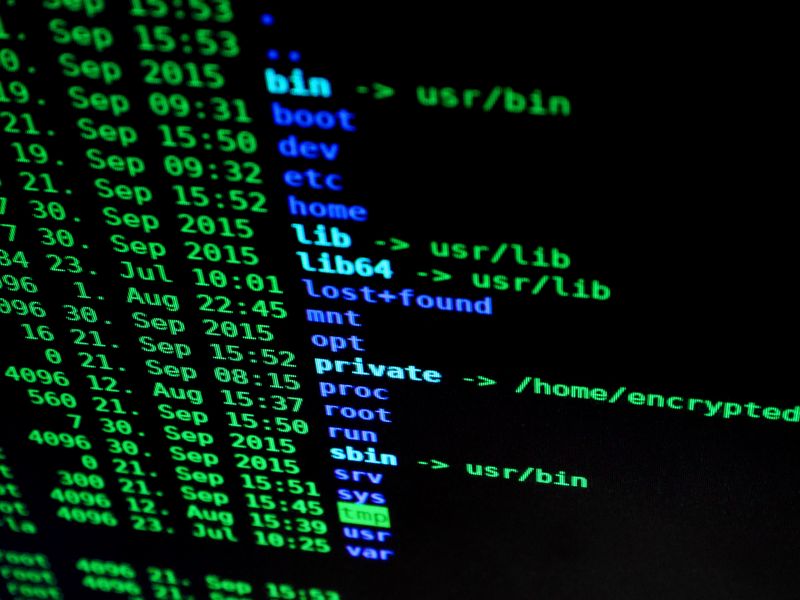Acoustic Side Channel Attacks: A Growing Threat to Keystrokes
In a new study conducted by researchers at Cornell University, alarming proof has been presented regarding the vulnerability of keyboards to acoustic side channel attacks. This research demonstrates that with the help of artificial intelligence (AI) models, passwords can be stolen with alarming accuracy, putting the security of personal data at risk.
The Methodology: A Combination of AI and Acoustic Eavesdropping
The team of researchers trained an AI model to overhear and decipher keystrokes transmitted over a smartphone. By utilizing off-the-shelf equipment and deep learning algorithms, the AI model achieved an astonishing 95% accuracy in stealing passwords based solely on the sound of typing.
Furthermore, the researchers explored the compatibility of conferencing app Zoom as a training platform for their AI model. By combining both the smartphone and Zoom, the model was able to replicate passwords with 93% accuracy. The study highlights the increased threat that deep learning, coupled with the prevalence of microphones and the surge in personal device usage for online services, poses to keyboard security.
The Danger of Acoustic Side Channel Attacks
Acoustic side channel attacks involve exploiting unintended signals or information leaked by a device through acoustic means. While such an attack may seem less obvious than traditional hacking methods, it is no less dangerous. By eavesdropping on the sound of typing, cybercriminals can silently collect sensitive information such as passwords, financial details, or personal messages without raising suspicion.
The findings of the Cornell University study raise concerns about personal data security and highlight the growing need for heightened cybersecurity measures. Given the pervasiveness of keyboards and the increasing reliance on personal devices for online activities, it is crucial to address this vulnerability effectively.
Internet Security and the Ongoing Battle
Understanding the Risks
Acoustic side channel attacks are just one of the many threats that individuals and organizations face in the digital realm. As technology advances, cybercriminals continually adapt, utilizing new methods to breach security measures. This necessitates a comprehensive understanding of potential vulnerabilities and the implementation of reliable defense mechanisms.
The Interplay between AI and Security
The rise of AI presents both opportunities and challenges in the realm of cybersecurity. While AI systems can enhance security through proactive threat detection and response, they can also be utilized maliciously. The Cornell University study exemplifies how an AI model can be trained to exploit acoustic side channels for the unauthorized collection of sensitive data.
Given the increasing sophistication of AI, it is incumbent upon researchers, policymakers, and technology companies to approach the intersection of AI and security with caution. Striking the right balance between utilizing AI for positive purposes and mitigating potential risks is essential to safeguarding personal privacy and digital security.
Editorial: Protecting Keystrokes in an Evolving Digital Landscape
The findings of the Cornell University study underscore the need for a multifaceted approach to internet security. While technological advancement is undoubtedly beneficial, it also creates new avenues for cybercriminals to exploit vulnerabilities. As individuals, organizations, and policymakers, there are several vital steps to consider in addressing these concerns:
Education and Awareness
Enhancing public awareness about the various cyber threats, including acoustic side channel attacks, is essential. By promoting digital literacy and best practices, individuals can better safeguard their personal information and contribute to a collective culture of online security.
Investment in Research and Development
Continuous investment in research and development is crucial for staying ahead of cyber threats. By dedicating resources to understanding evolving attack techniques and developing effective defense mechanisms, we can proactively mitigate the risks associated with AI-enabled attacks.
Regulation and Legal Frameworks
Policymakers should play an active role in addressing the challenges posed by emerging cybersecurity threats. By introducing regulations and legal frameworks that prioritize privacy and security, it becomes possible to enhance overall cybersecurity standards and safeguard individual rights.
Collaboration between Industry and Academia
Collaboration between industry and academia is indispensable in the ongoing battle against cyber threats. By fostering partnerships that encourage knowledge sharing, comprehensive research, and proactive mitigation strategies, we can collectively work towards creating a more secure digital landscape.
Conclusion: Securing Keystrokes in the Age of AI
The Cornell University study is a sobering reminder of the ever-evolving nature of cyber threats. The potential impact of acoustic side channel attacks on keyboard security highlights the urgent need for robust defense systems. Addressing this issue requires a combination of individual responsibility, research investments, regulatory interventions, and collaborative efforts.
As we navigate the digital landscape, it is vital to remain vigilant and proactive in safeguarding our personal information. By acknowledging the risks, fostering a culture of security, and implementing effective measures, we can mitigate the threat posed by malicious exploitation of AI and emerging cyber attack vectors.

<< photo by Sigmund >>
The image is for illustrative purposes only and does not depict the actual situation.
You might want to read !
- The Growing Threat: Cybercriminals Exploit Cloudflare R2 to Launch Phishing Attacks
- The Dangerous Misuse of Cloudflare R2 by Cybercriminals: A Growing Threat
- The New Normal: Securing the Digital Infrastructure in a Post-Citrix World
- The Delicate Balancing Act of Red-Teaming AI Models: Prioritizing Security in the Face of Complexity
- The Acceleration of AI: White House Fast-Tracks Executive Order
- Data Center Dangers: Uncovering the Multiple Flaws in CyberPower and Dataprobe Products
- Multiple Flaws Uncovered in ScrutisWeb Software: An Open Invitation to Remote ATM Hacking
- Microsoft Cloud Security Under Scrutiny: DHS Investigates Potential Risks




